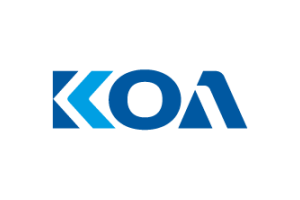Wireless Power and Wireless Charging
Ready to Start
Fortsetzung des Artikels von Teil 1
Can wireless power be worth it?
If the level of pressure is high enough, then it is definitely worthwhile to deal with wireless power. Examples are customer complaints about torn cables or if cable parts can be found in food or repeated malfunctions due to cable breakage. First steps are then the study of the technical literature, an internet search and the inquiry with manufacturers, distributors and service providers. The wireless power experts can usually quickly identify the knockout criteria after a brief analysis of the application and the installation situation.
If the opportunities emerge, the consequences must be examined. Transmitter and receiver coils must be accommodated somewhere, as must the electronics on the transmitter and receiver sides. Metal-containing parts may have to be removed to avoid eddy currents and to keep the efficiency high. Finally, precautions must be taken to ensure safety requirements.
If, for example, a coin – already glowing when heated by 10 W – is placed on a 40 W transmitter, this cannot be prevented with a simple fuse in the transmitter. This requires additional sensors and a microcontroller with complex software. And in the event of a fault, e.g. the failure of a sensor, a protective function should also be available.
In addition, interference suppression measures must be developed. Ferrite foils or plates for shielding have an influence on the construction and challenge designers. If a metallic shield is already present, e.g. the housing, this simplifies the matter.
Bad luck if it turns out towards the end that the requirement cannot be fulfilled even with contactless energy transfer. That's why developers should think to the end from the very beginning. It is therefore important to win the best minds for the project team.
Rocky road to success?
Older developers may still remember the 1980s when conventional power supplies consisted of heavy 50 Hz transformers and linear regulators with thick heat sinks. Switch-mode power supplies, on the other hand, are tempting. After all, they promise significant improvements such as smaller design, less weight and lower power losses.
In the beginning there were many problems with switching power supplies: Complex development with novel power semiconductors and integrated circuits for control and regulation, special transformers with a core of unknown ferrite material, and components for interference suppression distributed everywhere. And the worst of all: it was unknown territory, experts were scarce, expensive and painful experiences had to be gathered and patience was required – clear parallels to today's situation of contactless power transmission.
It is clear that there is also a lot of new territory to be explored when switching to wireless power and that a lengthy learning and rethinking process is necessary. As is so often said here: Every beginning is difficult. But when the first product is launched, the joy is great. An opportunity taken to stand out clearly from the competition and market leadership is secured again for a while.
For the conversion of further devices or follow-up products, the effort will then be considerably less because the developers involved have already made considerable progress in the learning curve.
The Wireless Power Session at the Embedded World Conference
At the Embedded World Conference 2019, all facets of contactless power transmission were demonstrated in a session, especially on the subject of wireless power. The various speakers presented new technologies and proven solutions, explained the advantages and disadvantages and even presented available evaluation boards.
A chance for the participants to quickly familiarize themselves with the topic and find out whether wireless power can be beneficial for their own product and what the negative consequences are. Both newcomers and participants who have been involved with the topic for some time received valuable information in the lectures, for example on electromagnetic compatibility, tips on simplifying approval procedures, biological relationships and protection against the dangers of strong electromagnetic fields.
If you see a need for the use of WPT in your products and want to make decisions in the near future, you should not hesitate to get involved with the topic now.
The future with wireless power begins now
As a gimmick for small consumer electronics devices, contactless energy transfer will, in my opinion, only become established in Asia. Due to the dominance of Asian consumer electronics manufacturers, there may be no alternative to WPT on other continents.
Wireless, as the name wireless power promises, will never exist. Electricity flows best in electrical conductors and must be isolated from the environment. So cable manufacturers need have no fear of the future, because transporting electricity from the producer to the consumer is a long road.
I cannot imagine the often propagated dream of a wireless office or living room. Contactless power transmission will help to better hide power cables and avoid the annoying process of plugging them in and out.
There are a few small kitchen appliances without cables already. This is a great thing if the energy receiver is integrated in the bottom of the appliance and the energy transmitter is under the worktop. That would be »wire invisible« instead of »wireless«. In any case, it is excellent for easier handling and better hygiene because the devices are easier to clean. In addition, a single wireless power standard would be very important for connecting or charging many different appliances, from electric kettles and popcorn machines to tablet PCs, smartphones or additional rechargeable batteries.
In comparison, the many cables in the office are not so annoying when they are neatly stowed away or rolled up in the guide channels of the desks. The only unsightly thing is the dust that piles up in the cable bundle after a few weeks and months, including mummified insects. In contrast to the kitchen, an office desk would need several energy transmitters that simultaneously supply the computer, monitor, printer, work light, etc., and charge the laptop, keyboard, mouse or telephone. Sensational would be a transmission loop in the table top or a mat, which supplies everything on it – but without endangering the health of the person at the desk.
For certain applications, especially in the consumer appliance sector, a standard would be important for the market penetration and spread of wireless power. But how long did it take for mobile phones to have a single charger with a plug-in power supply and USB connection? How long will it take for electric vehicles? Understandably, manufacturers would rather offer a special benefit to their customers than to all users. But »plug and play« is a big advantage for consumers. Do you still remember the times when every new device had to be installed on a computer to run? Before that, the current driver for the respective device had to be loaded to match the existing operating system. Five times you have considered whether a new device really must be.
Wireless Power with »place and play«, that would be customer-friendly, then the technology would assert itself masses and fast.
Contactless power transmission comes with big steps in those areas where cables or plug connections really interfere or are susceptible to interference. Many companies are already thinking about this and are launching feasibility studies for initial tests. And there is no need for a guaranteed standard of interoperability within systems, machines or devices. On the contrary, developers prefer to use the freedom of design and build their own contactless power transmissions exactly as it suits them best. If other devices do not need to access the wireless power interface, why should it be standardized?
The author

Prof. Markus Rehm
After studying electronics at Furtwangen University, he worked for eight years at Deutsche Thomson Brandt as a research and development engineer in the power supply laboratory.
He has been working as a freelancer for 20 years and offers his customers research, development and consulting services in his electronics laboratory. His focus is on the function, reliability and EMC of power electronics as well as research, especially in the field of contactless power transmission.
Many of his inventions have been applied for patents and are successfully in use. Since 2008 he has taught industrial and power electronics as a lecturer at the Furtwangen University of Applied Sciences and was appointed honorary professor in 2019. Since 2016 he has also been giving one-day seminars on reliable power supplies at FED (Fachverband Elektronik Design).
rehm@ib-rehm.de
- Ready to Start
- Can wireless power be worth it?





